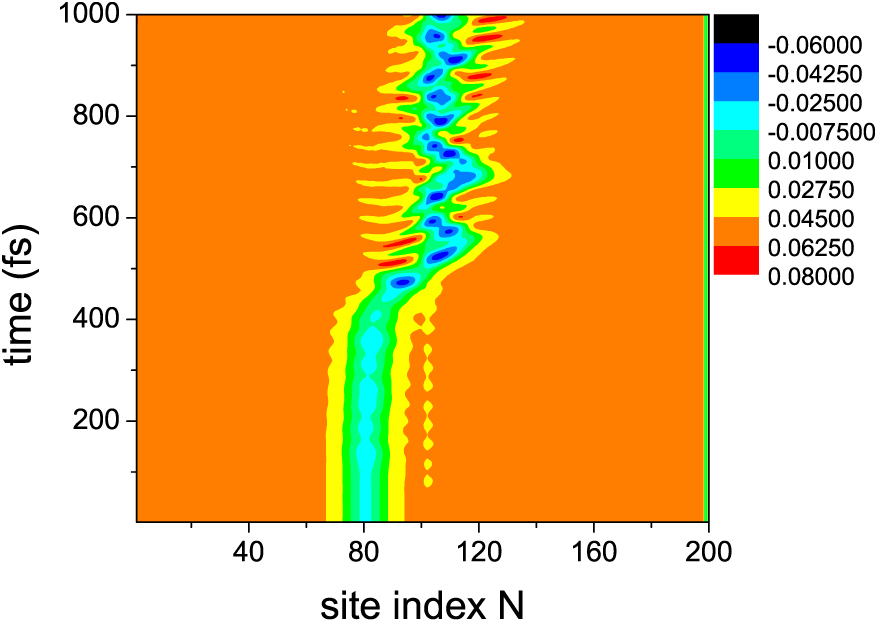EPJ B Highlight - Impurities enhance polymer LED efficiencies
- Details
- Published on 23 September 2020

Molecular dynamics simulations have shown that the mysteriously high efficiency of polymer LEDs arises from interactions between triplet excitons in their polymer chains, and unpaired electrons in their molecular impurities.
Polymer LEDs (PLEDs) are devices containing single layers of luminescent polymers, sandwiched between two metal electrodes. They produce light as the metal layers inject electrons and holes into the polymer, creating distortions which can combine to form two different types of electron-hole pair: either light-emitting ‘singlets,’ or a non-emitting ‘triplets.’ Previous theories have suggested that the ratio between these two types should be around 1:3, which would produce a light emission efficiency of 25%. However, subsequent experiments showed that the real value can be as high as 83%. In new research published in EPJ B, physicists in China, led by Yadong Wang at Hebei North University, found that this higher-than-expected efficiency can be reached through interactions between triplet excitons, and impurities embedded in the polymer.
Owing to their scientific and commercial value, PLEDs are becoming an increasingly popular field of research. The discoveries of Wang’s team could now lead to more widespread applications of the devices in the future. Within PLED polymer layers, excitons are known to be produced through the recombination of ‘polarons’ – distortions in electrical charges which form and disappear as electrons move through solid materials. However, other mechanisms must also be involved to explain why their luminescence efficiencies are so much higher than previous theories predicted. One proposal suggests that their electrical and optical properties of PLEDs are strongly influenced by unpaired electrons trapped within molecular impurities.
Wang and colleagues explored this idea through molecular dynamics simulations, which allowed them to recreate collisions between a non-emitting triplet exciton in a polymer chain, and an unpaired impurity electron. Their calculations revealed that light-emitting singlet excitons are among the main products of this reaction; with their overall proportion varying with the size of the impurity, and its degree of coupling with the polymer chain. For the first time, the result offers conclusive evidence that impurities can significantly boost the efficiency of PLEDs, and offers new clues about the molecular mechanisms involved.
Y D Wang, J J Liu, Y X Liu, X R Wang, Y Meng (2020), Dynamic Recombination of Triplet Exciton with Trapped Counterion in Conjugated Polymers, European Physical Journal B 93:173, DOI: 10.1140/epjb/e2020-10310-4




